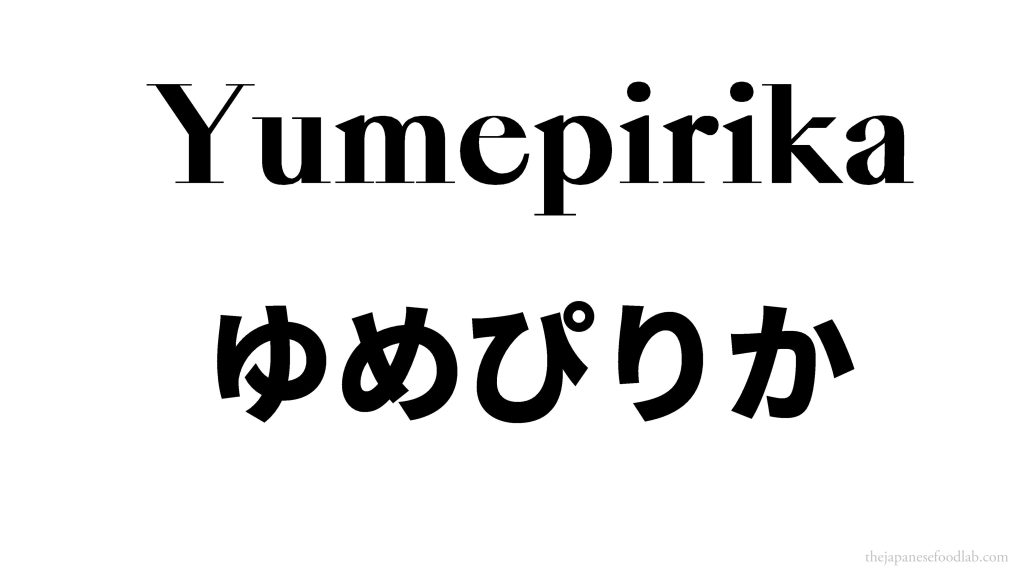
Why is Yumepirika rice special?
Yumepirika rice holds a special place in the Hokkaido rice scene due to its exceptional taste and reputation. Although Hokkaido is blessed with abundant land and water, the extreme cold weather up north poses its own set of difficulties when it comes to growing rice. After overcoming numerous difficulties from breeding to experimentation, Yumepirika made its debut across Japan in 2011 as a luxurious brand of rice produced in Hokkaido. Its delicious taste has garnered a large following and nationwide recognition as one of the top contending rice varieties.
Yumepirika rice stands out due to its unique characteristics. It is a variety of rice with low amylose content, which refers to the starch molecule found in rice. The taste and stickiness of rice are strongly influenced by its amylose content. The stickiness in rice is primarily attributed to amylopectin, one of the two types of starch present. As the percentage of amylose decreases, the percentage of amylopectin increases, resulting in a stickier and more delectable texture. Yumepirika rice, with its low amylose content, exhibits exceptional stickiness and a chewy texture. It possesses a pronounced sweetness and remains delicious even when served cold.
Further information about Yumepirika rice
In the year 2000, through persistent research and breeding programs, Hokkaido was able to produce several exceptional-tasting varieties of rice. Whilst these rice showcased excellent cold resistance, their main drawback was their significantly lower yields. In spite of this, they continued cultivation of the seeds, leading to an experimental plot of Yumepirika in 2004 that showed a large enough increase in yields to justify further production.
However, when it was scheduled for nationwide debut in 2009, Hokkaido faced severe cold weather, resulting in a poor harvest. The sales volume fell below 10% of the initial forecast, with only about 800 tons available. Furthermore, due to the high anticipation and demand the rice quickly sold out and the shortage continued.
To address consumer demands, rice blended with non-standard grains that didn’t meet the shipping standards for the Yumepirika and Oborozuki was additionally sold as a blend. This measure was taken in response to requests from consumers who couldn’t obtain the rice, although the original plan didn’t include selling non-standard rice to the general public.
In the years after, the demand for Yumepirika rice persisted and it continued to be a highly sought after variety.
Yumepirika’s name and logo design concept
The name “Yumepirika” is derived from the Ainu language and represents a combination of the dreams of the people of Hokkaido for the most delicious rice in Japan, along with the Ainu word “pirika,” which translates to beautiful and pleasant. This carefully selected name embodies the essence of Yumepirika rice.
Yumepirika’s Japanese Grain Inspection Association Ranking
Yumepirika rice has consistently achieved the highest rank of Special A grade every year since its debut.

How does Yumepirika rice taste?
Yumepirika is acclaimed as the finest Hokkaido rice, primarily due to its superior stickiness and sweetness while being slightly softer in texture. When cooked, it possesses a glossy and sparkling appearance, a testament to the relentless efforts of the producers in continually improving the rice variety.
Yumepirika rice’s notable deliciousness lies in its exceptional sweetness. It boasts a robust and pronounced flavor, firm stickiness, and a moderate level of hardness that allows the sweetness to be fully savored with each bite. Even after swallowing, the sweetness lingers at the back of the throat.
We have found that some bags of Yumepirika rice we tasted had a peculiar wheat-like nutty smell to it. We are unsure if this is a unique characteristic of the variety or even a by-product of the processing method but do not consider it a negative overall. Just make sure that the rice is washed well before cooking.
As one of those rices that sits on the far end of the spectrum for springiness, stickiness and sweetness, we have always thought of Yumepirika as the strongest contender for a rice strongly suited for dinner exclusively. It is a particularly good pairing for non-Japanese food that has a heavier taste or spice such as Sichuan water-cooked fish, mapo tofu, stews or curries. We much prefer a lighter style of rice for breakfast and lunch.
For a firmer texture that optimizes Yumepirika’s traits, reduce the water by 1 tablespoon (15g) per 1 cup (150g) of raw rice cooked.